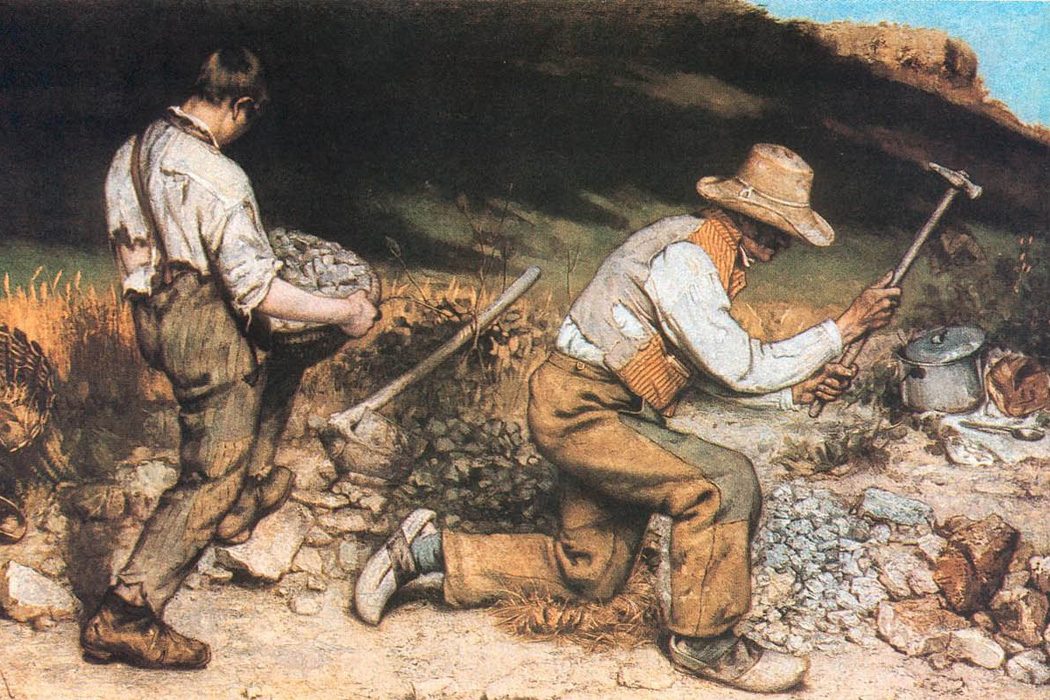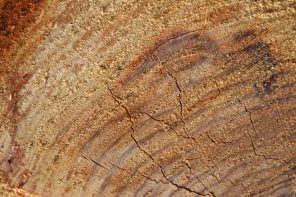Steep green hills abruptly give way to a sloped clearing, octopus-like, its tentacles twisting through thick growth and dwindling into impassable crevices among brambles and tree roots. On the widest side of the clearing a sheer cliff face exposes tiers of reddish gray rock. Beneath it are two-meter-high piles of irregularly shaped limestone and in front of them, seated on rocks that serve as stools, four sweating teenagers wield mauls that crush reddish gray slabs into reddish-gray pebbles that a waiting truck will haul to some construction site.
Cerro Holgado, Oaxaca, Mexico. The Sierra Norte, six-thousand feet above sea level. Timber in the higher altitudes, most of which has been harvested leaving scrub growth behind. Jagged hills and zigzagged valleys dotted with tiny pueblos, most accessible only to pickups and beer trucks. A hard life, but “it’s always been that way,” Victor Manuel Cruz asserts. A sturdy man, strong, with sloping shoulders and a face that seems too large for his body, he has lived in the Mazateco, as he calls it, all of his life. “We get by,” he says, we being he, his wife and their three children, “we don’t have much but we get by.”
Like the youngsters smashing limestone into pebbles he started working “before my penis got big.” Like them he never finished primary school. Nor did his wife. The rhythm of his speech seems to match the rhythms of the hammers against limestone: pum! pum! pum! The half-moon scar just below his left eye gives testimony to a splinter of limestone that flew off the crowbar he was jabbing to pry slabs of stone apart.
Reducing mountainside rock into road construction pebbles begins with dynamite. Each explosion topples more of the hillside, taking with it trees, earth, and animals. Workmen like Cruz hefting two-meter long crowbars climb the cliffs to pry apart tiers of limestone shaken loose by the blasts.
“Sometimes we fall,” he admits, “and we end up as bruised as if we’d just fought a heavyweight champion.”
Some of the slabs and heavy stones are hauled away but the smaller pieces that have shattered and fallen are shoveled into piles for the picapedreros (“rockbreakers”) to hammer into pieces the size of Legos or dominoes. Rock after rock after rock, the youngsters hammer for six hours a day, pum! pum! pum! earning as much as fifty pesos (the equivalent of $2.50 U.S.) for labor that can include smashed fingers and bruised biceps. Like Cruz they have dropped out of school—“working is better,” a 14-year-old attests. He says they get to keep the money they earn, that they don’t have to give it to their parents. With it they purchase clothes, food—sometimes beer. “There’s not much in the pueblo to buy,” Cruz acknowledges. “Sometimes when a truck goes to the city [Huautla] they go along.”
Despite the monotony of the work one has to focus. It’s not a job for idle dreamers. Or for weaklings. The thin-legged bony teenagers develop oversized shoulder and arm muscles. The oldest of the four, a 15-year-old, is ambidextrous—he can wield the mallet well with either hand. His broken toes have healed, he says, though they are a bit bent. A huge piece of limestone fell on them, “but I didn’t cry—well, only for a moment.”
The future?
One of the 14-year-olds glances towards Cruz. He shrugs as the youthful picapedrero returns to hammering limestone. “Some go away, emigrate. The rest of us stay. We get by.”
Pum! pum! pum!
Image: “The Stone Breakers” by Gustave Courbet




